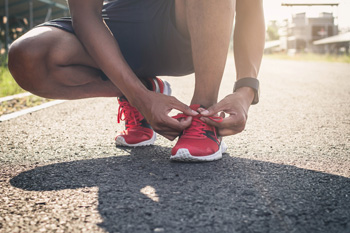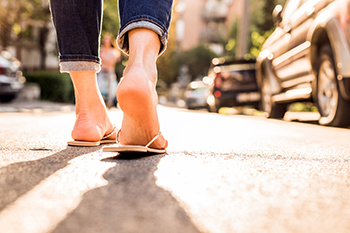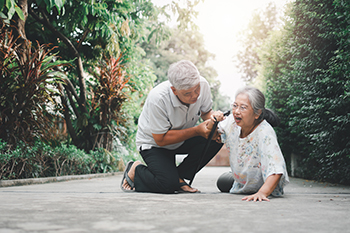
When the correct running shoes are worn, the entire body is properly supported. Research has shown it is not necessary to have a break-in period when purchasing new shoes, so it is important to have a perfect fit from the beginning. Running shoes typically last three to four months, and a good indication that it may be time for another pair of shoes can be noticing blisters on the feet or pain in the feet or calves. When new shoes are purchased, it is beneficial to have your foot measured in the store. This can be helpful in determining your exact shoe size, in addition to learning if your foot is wide or narrow. It is suggested that you decide what type of running you wish to pursue, and this can help you decide which type of shoe to buy. If you would like more information about how to choose shoes that fit properly, please speak to a podiatrist.
Finding a properly-fitting shoe is important in reducing injuries and preventing foot problems. For more information about treatment, contact one of our podiatrists from InStride Family Foot Care. Our doctors will treat your foot and ankle needs.
Proper Shoe Fitting
A common concern when it comes to foot health, having properly fitted shoes can help prevent injuries to the foot. Out feet affect our posture and gait, which in turn affects the biomechanics and overall bodily structure. With 33 joints, 26 bones, and over 100 ligaments, the potential for serious injury is much greater than one realizes. Although the feet cease growth in adulthood, they still change shape as they mature. Here are some factors to consider when it comes to investing in proper fitting shoes:
- Be sure the shoes fit correctly right away
- Ensure the ball of your foot fits comfortably in the widest portion of the shoes
- Even though they may look fashionable, improper fitting shoes can either create adverse conditions or exacerbate existing ones you may already have
- Walk along a carpeted surface to ensure the shoes comfortably fit during normal activity
Keeping in mind how shoes fit the biomechanics of your body, properly-fitting shoes are vitally important. Fortunately, it is not difficult to acquire footwear that fits correctly. Be sure to wear shoes that support the overall structure of your body. Do your feet a favor and invest in several pairs of well-fitted shoes today.
If you have any questions please feel free to contact our offices located in Concord, Charlotte, and Salisbury, NC . We offer the newest diagnostic and treatment technologies for all your foot and ankle needs.




